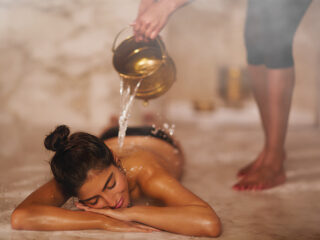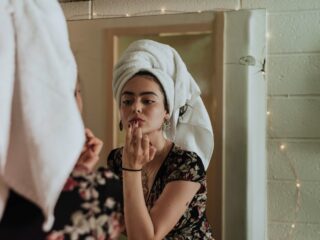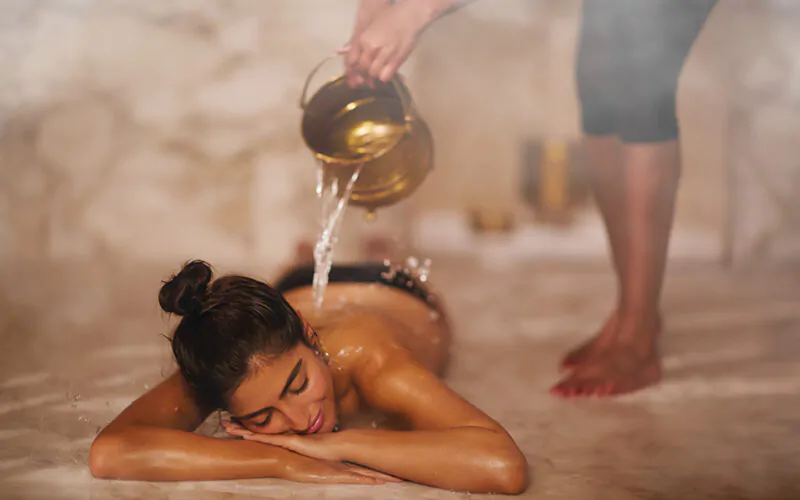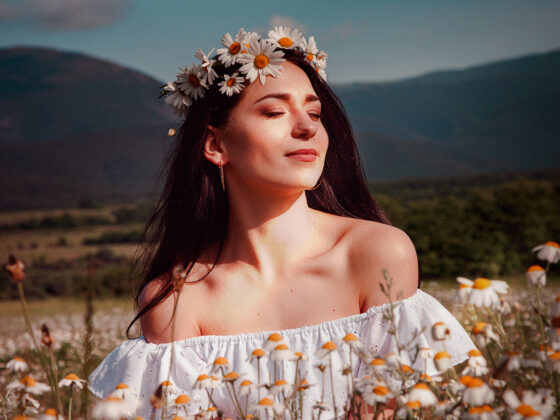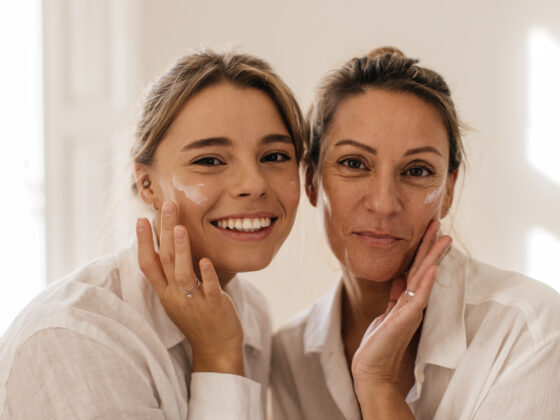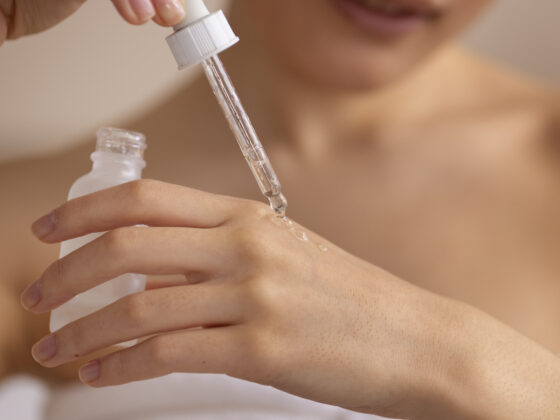The Moroccan hammam is synonymous with luxury. A spa ritual of grandeur, it blends history, tradition, and skin-nourishing ingredients to offer an unparalleled wellness experience. In the world of high-end spa treatments, the Moroccan hammam holds a special place, transporting those who indulge in its rituals to ancient Moroccan palaces.
In this article, we will tell you everything you need to know about the Moroccan hammam rituals. We will explain the steps, the benefits, and the products involved. We will also give you some tips on how to prepare and enjoy this unique experience.
Navigate your way
A Glimpse into History: Where the Hammam Tradition Began?
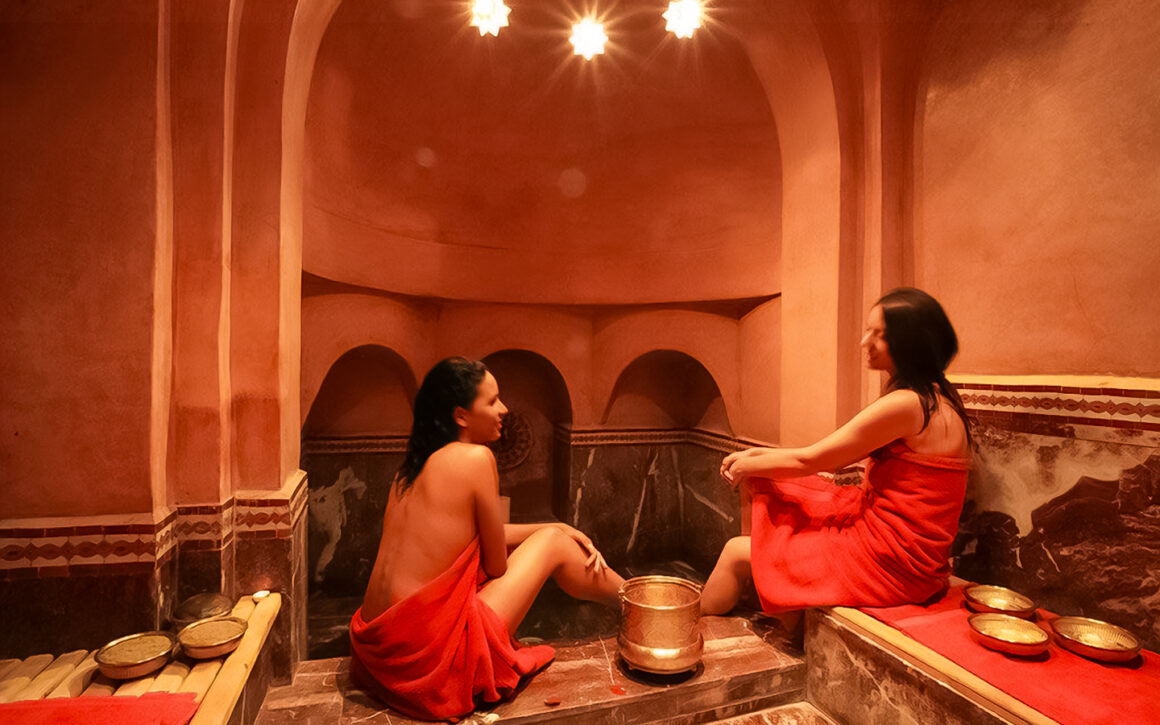
Hammams, while popularly associated with Morocco, trace their roots to the ancient Roman bathhouses dating back to over 2000 years ago. when the Roman Empire built public bathhouses to improve hygiene and health. The Romans left their mark on Morocco’s architecture and culture, as seen in the ancient ruins that still exist in the country.
As the concept traveled and adapted to the Moroccan culture, with some modifications that made it different from other bathhouses, the Moroccan hammam truly transformed into a luxurious ritual. Here, it became more than just a bathhouse. In the midst of bustling medinas and under the shadow of grand palaces, hammams emerged as sanctuaries of serenity, offering an escape from the mundane.
Every corner of these bathhouses tells tales of sultans and queens, of whispered secrets and age-old beauty recipes. In ancient Morocco, a visit to the hammam was a mark of one’s social stature. Beyond hygiene, it represented elegance, refinement, and an appreciation for traditions that celebrated the human body in all its glory.
The Moroccan hammam was also a place of ritual and ceremony, where important life events such as weddings and births were celebrated. The bride-to-be would spend hours in the hammam with her female relatives and friends, pampering herself with various treatments and preparing for her big day. The new mother would also visit the hammam after giving birth, to purify herself and restore her health and beauty.
Essential Products and Items for Moroccan Hammam Rituals

The luxury of the Moroccan hammam is heightened by the use of authentic, traditionally crafted products. To recreate this experience, it’s vital to gather the right ingredients. Here’s a comprehensive list to guide you:
1. Beldi Black Soap

An olive oil-based soap, it is the cornerstone of the hammam ritual. With a gel-like consistency and infused with eucalyptus, it’s essential for the initial cleansing step.
2. Kessa Glove

A Kessa “Kees” glove that is similar to soft sandpaper will help you scrape and exfoliate your body, ensuring you shed dead skin cells and reveal radiant skin beneath.
If you are in a spa or professional hammam, your attendant is the one who will be taking care of the entire process such as the application of products, exfoliation, and rinsing you.
3. Rhassoul Clay
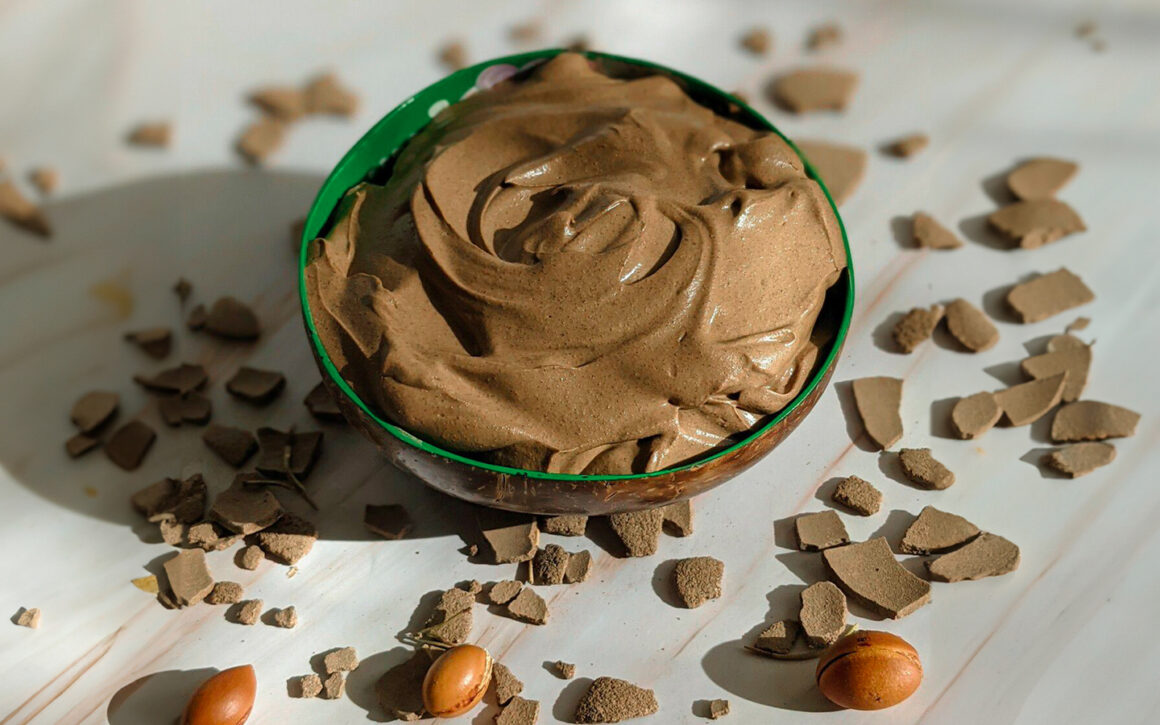
A natural mineral clay mined from the Atlas Mountains, it’s renowned for its ability to absorb impurities from the skin and hair. It is often mixed with rose or orange blossom water for added luxury.
4. Argan Oil

A multi-purpose oil, perfect for hydrating the skin post-hammam, and also beneficial for hair and nails.
5. Rose or Orange Blossom Water

These fragrant waters are ideal for the final rinse, adding a touch of luxury to the experience.
6. Essential Oils

Lavender, cedarwood, and frankincense are often used in hammams for their relaxing and skin-friendly properties.
7. Large Basin or Bucket
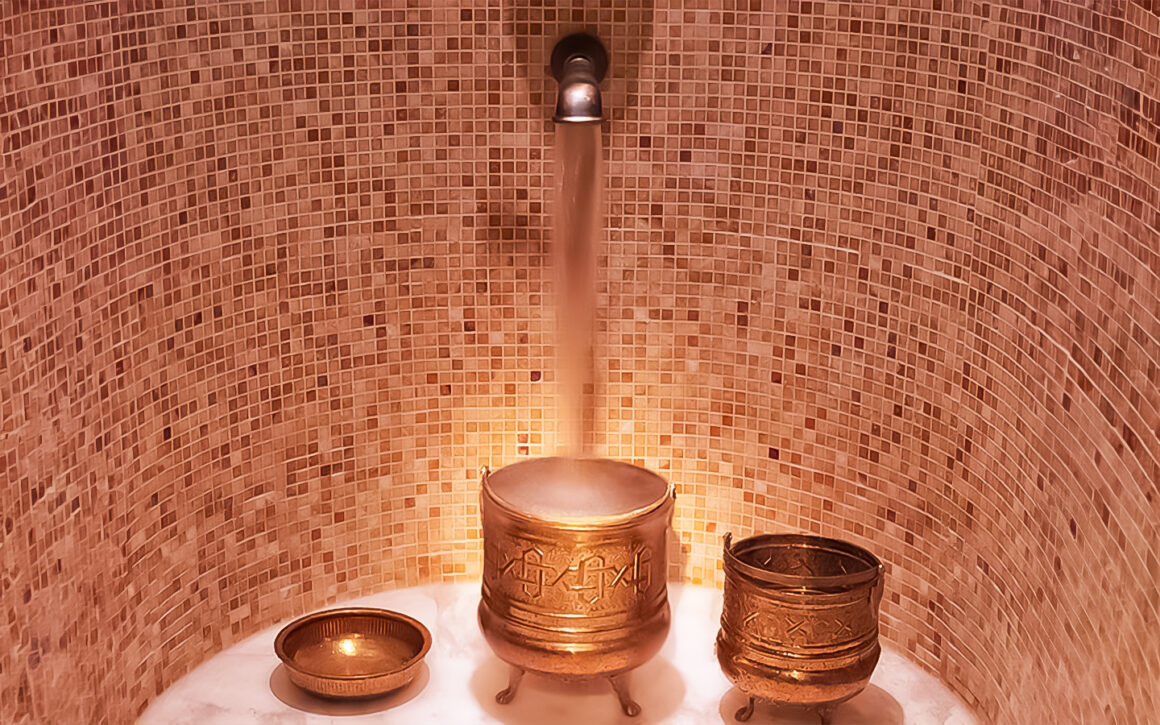
For collecting and using water during the ritual.
8. Soft Towels
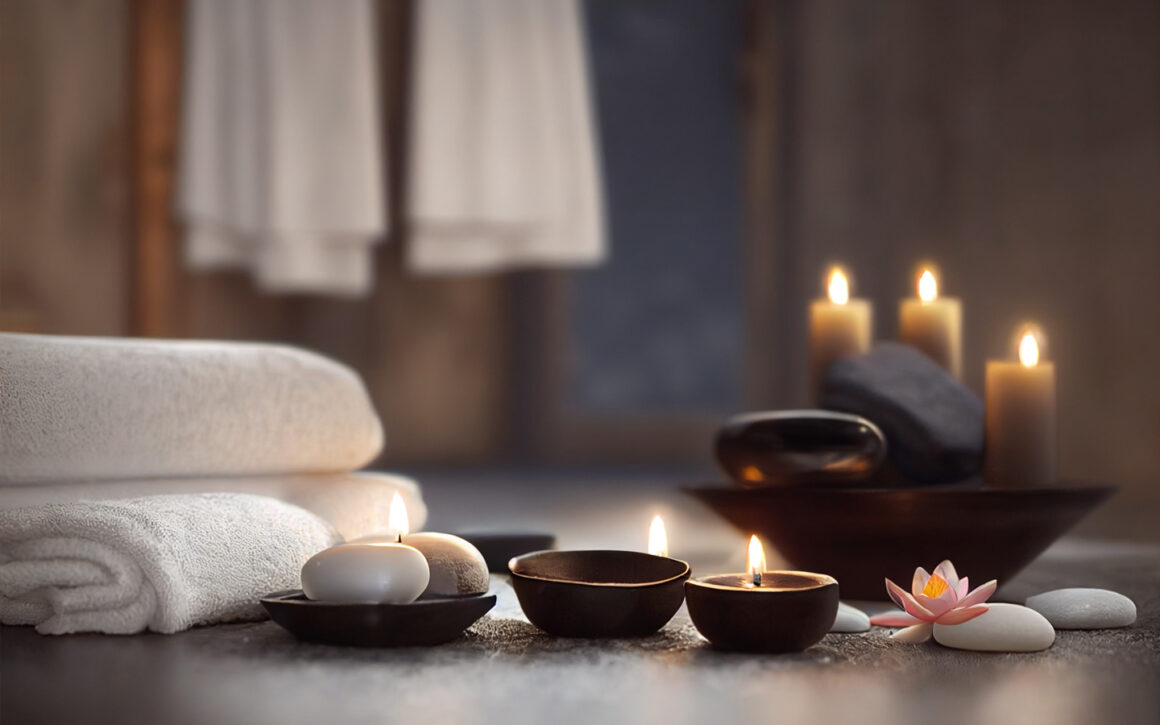
To dry off post-ritual and wrap oneself in comfort.
9. Aker el Fassi

This is a natural lip and cheek stain made from pomegranate and poppy flowers. Its red hue has been adorning Moroccan women for centuries, and it’s often applied post-hammam for a touch of natural color.
10. Henna

A natural dye used for both hair coloring and the creation of intricate designs on hands and feet. But in Moroccan hammam, Natural henna is used for moisturizing, cleaning, and cleansing the body.
11. Traditional Moroccan Pumice Stone
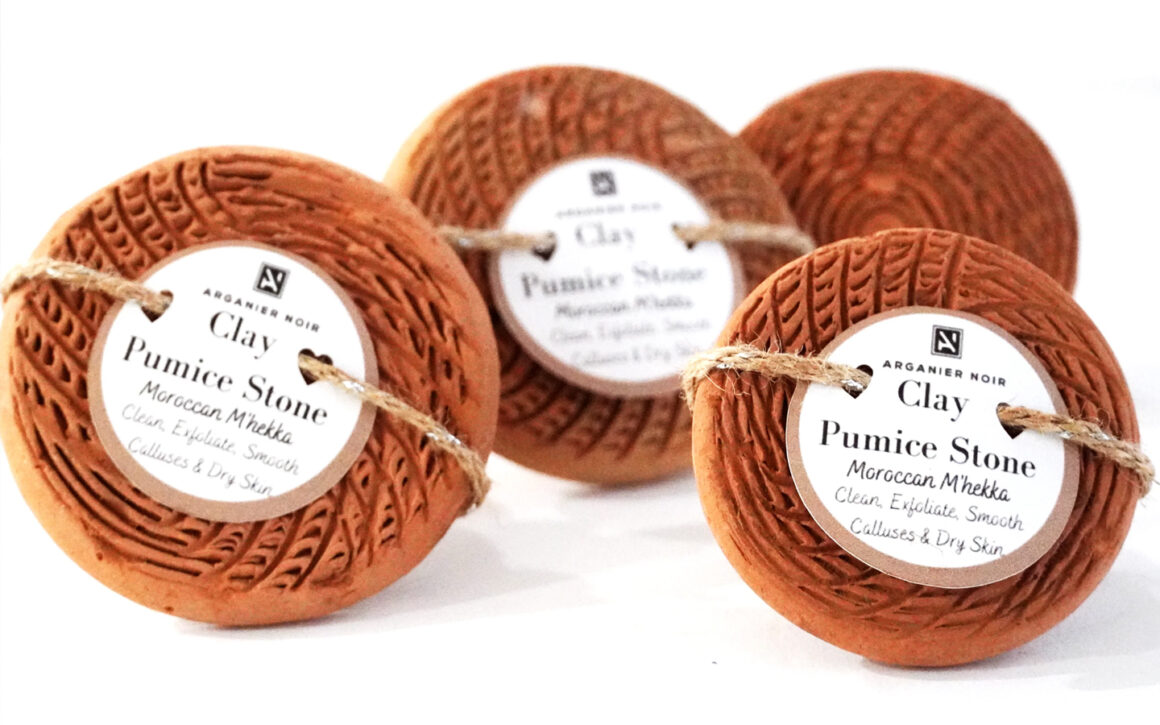
Traditional Moroccan Terracotta Clay Pumice Stone Traditional terracotta Moroccan pumice is called a M’hekka in Morocco. Essential accessory in Moroccan Hammam for beautiful soft skin
Traditional Ancient Moroccan DIY Recipes

One of the most fascinating aspects of the Moroccan Hammam rituals is the use of traditional ancient recipes that have been passed down from generation to generation.
These recipes are made with natural ingredients that are easily found in Morocco, such as argan oil, rose water, henna, clay, and herbs. They are designed to cleanse, exfoliate, moisturize, and nourish the skin, as well as to provide a relaxing and aromatic experience
1. Rhassoul Clay Mask with Herbs
- Ingredients: Rhassoul clay, rose water, and dried herbs like chamomile or rose petals.
- Directions: Mix the clay with rose water to form a smooth paste. Add crushed dried herbs for an extra touch of luxury and leave on the skin for 10-15 minutes before rinsing.
2. Argan Oil Infusion
- Ingredients: Pure Argan oil, lavender, or rose essential oil.
- Directions: Mix a few drops of essential oil into the Argan oil for a fragrant, nourishing post-hammam treat.
3. Aker el Fassi Liquid Tint Mix
- Ingredients: Dried pomegranate skins and dried poppy petals (aker el fassi) with rose water or mineral water.
- Directions: Crush the ingredients into a fine powder. Mix with a bit of water to form a paste and apply directly to lips or cheeks for a natural stain.
4. Almond & Honey Face Scrub
- Ingredients: Ground almonds, raw honey.
- Directions: Mix equal parts of ground almonds and honey to form a paste. Use this gentle exfoliator post-hammam for soft, glowing skin.
Create Your Own Moroccan Hammam At Home

Now that you’re familiar with the essential products and traditional recipes, let’s bring the Moroccan hammam experience to your home.
We’ll walk you through the steps to recreate this luxurious ritual. From crafting the perfect ambiance to applying each traditional product, get ready to transform your space into a haven of Moroccan wellness.
Here are the steps to follow to enjoy the Moroccan hammam rituals at home:
1. Set the mood
The journey into the serene Moroccan Traditional Hammam begins with relaxation. In a fragrant, warm room, individuals unwind, shedding the stresses of daily life by lighting some candles in your bathroom. You can also use a copper meditation Urli with floating candles for a more exotic touch. Play some soothing music that will help you relax and unwind.
2. Steam Bath
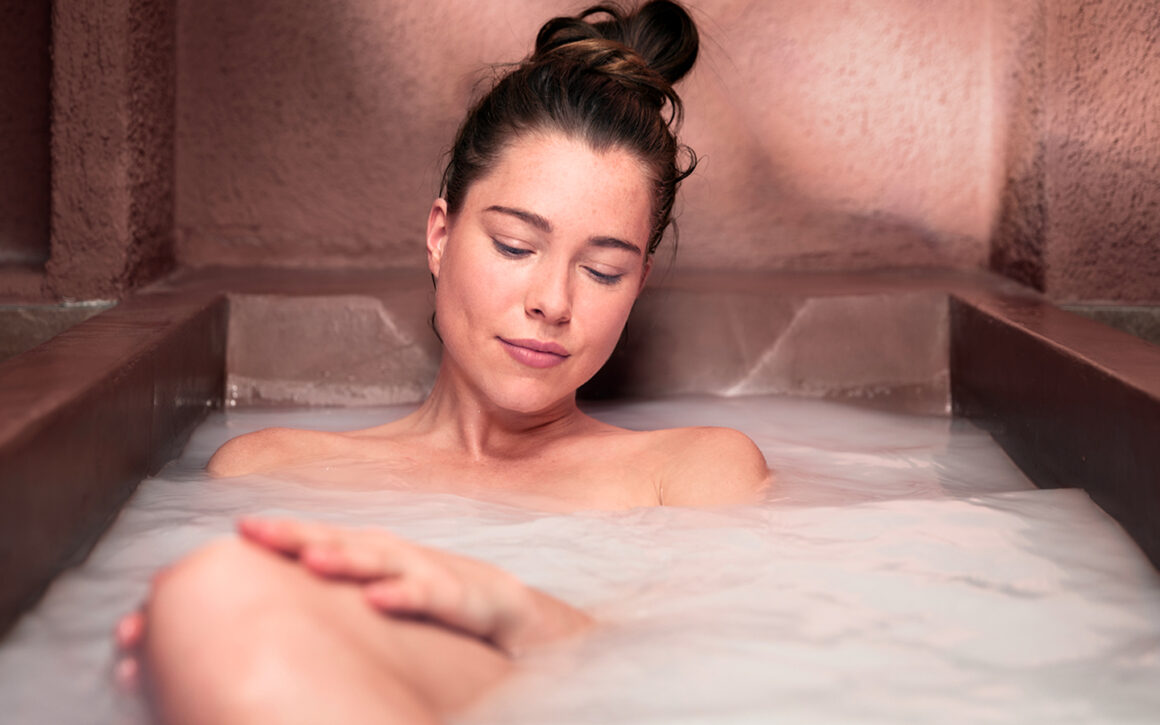
Fill your bathtub with hot water or turn on your shower to create a steamy atmosphere.
The relaxation phase transitions into a steam bath, The steam will open up your pores and prepare your skin for the next steps, and facilitate the release of toxins, The heat and humidity synergistically relax muscles, enhance circulation, and hydrate the skin.
3. Application of Beldi Soap & Henna

A unique blend of Beldi soap and henna is generously applied to the body post-steam bath. Left on for about 15 minutes, this rich mixture softens the skin, making it receptive to exfoliation, while nourishing and purifying.
The Recipe:
- Step 1: Squeeze a lemon and add henna to make a paste.
- Step 2: Mix black soap and rose water to make a cream.
- Step 3: Blend the paste and the cream together.
- Step 4: Add a scoop of Akkar el Fassi and stir well.
- Step 5: Spread the mixture on your body and wait for 15min then rinse off with warm water.
4. Exfoliation with Kessa Glove:

After applying the black soap mixture, The skin, now softened, is ready for exfoliation. rinse it off with warm water and start scrubbing your skin using a traditional ‘Keess’ glove, A Kessa glove is a rough-textured glove that removes dead skin cells and stimulates blood circulation.
5. Traditional Moroccan Scrub

This traditional Moroccan scrub is a simple yet luxurious way to exfoliate and nourish your skin, leaving it smooth, soft, and rejuvenated, much like the experience in a Moroccan hammam.
Ingredients:
- 1 cup fine sea salt or sugar
- Drops of Argan oil
- 2 tablespoons raw honey
- 1 tablespoon lemon juice
Instructions:
Combine sea salt (or sugar) with Argan oil, honey, and lemon juice in a bowl.
Apply the scrub in circular motions, focusing on rough areas. Rinse off with warm water.
6. Ghassoul Clay Mask & Massage
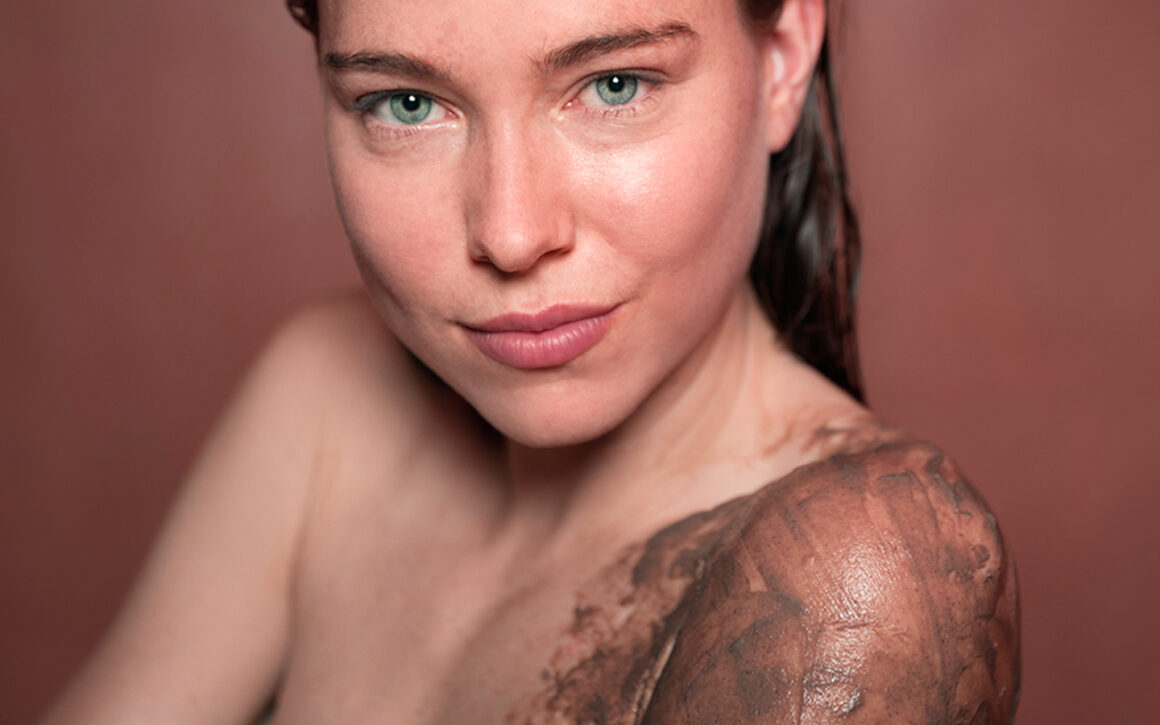
The next step is to apply some ghassoul clay on your skin. Ghassoul clay is a natural clay that comes from the Atlas Mountains in Morocco. It has detoxifying, nourishing, and soothing properties for the skin. followed by a soothing massage focusing on relieving tension and enhancing circulation.
Mix the Ghassoul clay with rose water and drops of orange blossom water for the fragrance, Leave the mask for 5 – 10 minutes so that it is dry but not too tight. The clay will absorb impurities and toxins from your skin and leave it soft and refreshed. Rinse off the clay with warm water and pat your skin dry with a towel.
You can also use the mask as a natural shampoo and as a weekly face mask.
7. Foot care with a tint of Aker el Fassi

After scrubbing your body with the Kessa glove, you can also give some extra attention to your feet. They are often neglected, but they deserve some pampering too. You can use Traditional terracotta Moroccan pumice called a M’hekka in Morocco or any pumice stone to remove the hard and dry skin from your heels and toes. You can also apply some natural black soap or rhassoul clay to your feet and wrap them in plastic bags for a few minutes. This will help to soften and cleanse your feet. Then, rinse them well and dry them with a towel.
To use Aker el fassi on your feet, you need to mix some powder with water or lemon juice to form a paste. Apply the paste to your toenails and the soles of your feet. Leave it for about 20 minutes or more, depending on how dark you want the color. Rinse it off with warm water and admire your tinted feet.
You can also mix the powder with Vaseline and Almond oil and make a smooth red paste with it, apply it as a night mask for your feet, and then wear your socks all night long. The result? Baby soft feet with a reddish tint.
8. Final Rinse & Relaxation
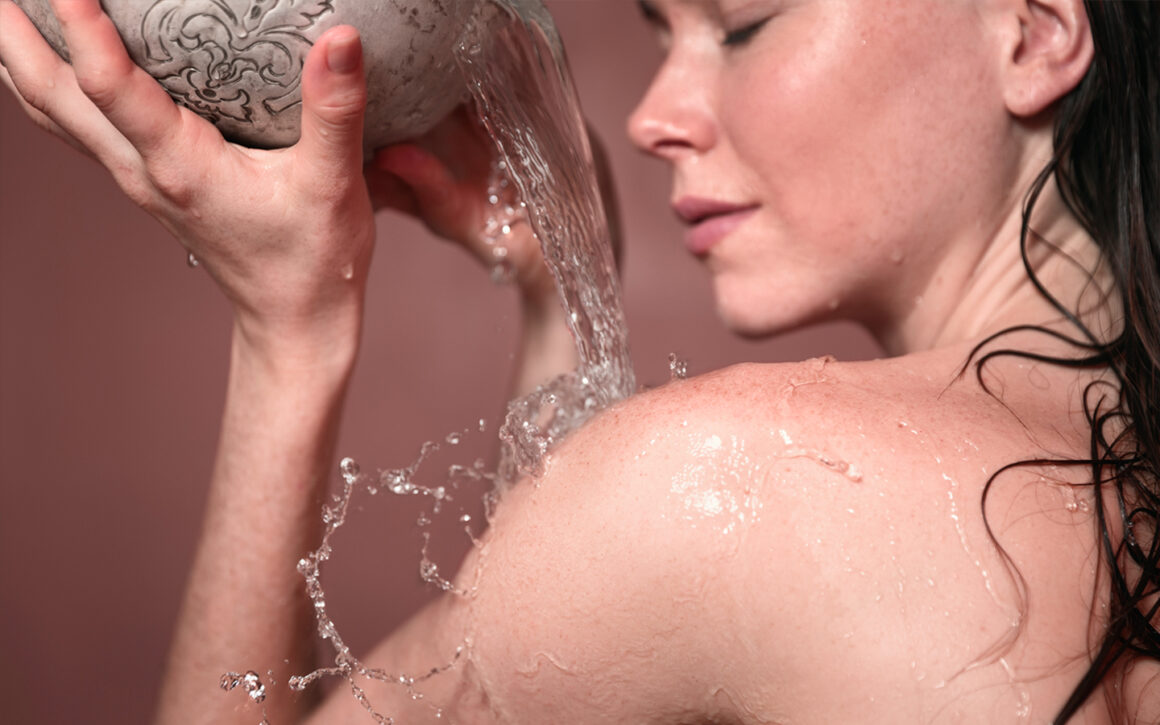
A final rinse concludes the Hammam ritual, leaving the individual feeling refreshed and revitalized. Add to your water stool some of the orange blossom water or any preferred natural scent, and rinse all of your body with it, A period of relaxation follows, allowing for savoring the tranquility and rejuvenation of this rich Moroccan tradition.
9. Body Care with Argan Oil

The final step is to moisturize your skin with argan oil. Argan oil is a precious oil that comes from the kernels of the argan tree in Morocco. It has hydrating, nourishing, and protective effects on the skin. It also gives the skin a healthy glow and a pleasant scent.
Massage some argan oil on your skin, using circular motions and paying attention to dry areas such as elbows, knees, and heels. You can also apply some argan oil on your hair, nails, and lips for extra care.
10. Refresh & Sooth

The last step is to relax and enjoy the results of the Moroccan hammam rituals. You can spray some rose water on your face and body for a refreshing and soothing effect.
11. Relax & Enjoy the Mint Tea

Lie down on your bed or couch, wrap yourself in a cozy blanket, and close your eyes. Breathe deeply and let go of any stress or tension. Feel how your skin and body are rejuvenated and revitalized by the Moroccan hammam rituals. You have just experienced one of the most luxurious spa treatments in the world, drink some Moroccan mint tea, and enjoy a bite of your favorite cookie.
The Wrap
The Moroccan hammam rituals are not only good for your skin and body but also for your mind and soul. They are a great way to pamper yourself, relax, and enjoy some quality time with yourself or with someone you love.
We hope you enjoyed this guide on how to do the Moroccan hammam rituals at home. If you have any questions or comments, please feel free to share them below.

